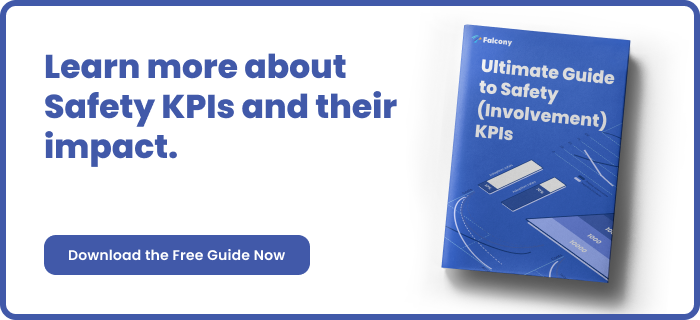8 Common Safety Risks in Nonprofit and Volunteer Organisations
Nonprofit and volunteer organisations play a vital role in supporting communities and addressing social, environmental, and humanitarian challenges.
However, these organisations are not immune to safety risks. Often operating with limited resources and diverse volunteer teams, nonprofits must be proactive in managing safety to protect their people, reputation, and the communities they serve.
Below, we explore eight common safety risks that nonprofit and volunteer organisations should be aware of—and actively work to mitigate.
Inadequate Volunteer Training
Volunteers are at the heart of many nonprofit operations. However, insufficient training can lead to accidents, errors, or unsafe practices. Whether working in food banks, charity shops, or disaster relief, volunteers need clear guidance on safe working practices, equipment use, safeguarding, and emergency procedures.
Mitigation:
Provide structured induction programmes, role-specific training, and refresher courses. Consider developing a volunteer handbook outlining key safety procedures.
Poor Risk Assessments
Nonprofits sometimes overlook formal risk assessments, especially for one-off events or small-scale activities. However, without properly identifying hazards, organisations expose volunteers and beneficiaries to unnecessary danger.
Mitigation:
Carry out thorough risk assessments for all activities, regardless of size or frequency, and implement controls to minimise risks.
Manual Handling Hazards
Charity shops, food distribution centres, and fundraising events often involve lifting, carrying, or moving stock and equipment. Improper manual handling can result in musculoskeletal injuries.
Mitigation:
Provide manual handling training and ensure volunteers use appropriate equipment (e.g., trolleys, lifting aids). Encourage safe lifting techniques and team lifting when necessary.
Slips, Trips, and Falls
Many nonprofit environments—such as community centres, event venues, and temporary outdoor setups—pose slip and trip hazards due to uneven surfaces, trailing wires, or wet floors.
Mitigation:
Regularly inspect premises and venues for hazards, keep walkways clear, and respond promptly to spills or maintenance issues. Temporary event sites should be risk assessed before use.
Safeguarding and Abuse Risks
Nonprofits working with vulnerable populations—including children, the elderly, and people with disabilities—must safeguard against abuse, exploitation, and neglect.
Mitigation:
Implement safeguarding policies and conduct background checks on staff and volunteers. Provide safeguarding training and establish clear reporting procedures.
Driving and Transport Risks
Volunteers may drive for charitable purposes, such as delivering supplies, transporting beneficiaries, or running errands. Vehicle accidents or poorly maintained vehicles pose significant risks.
Mitigation:
Check driving licences and insurance, ensure vehicles are roadworthy, and provide driver safety guidance. Where possible, use vehicles insured and maintained by the organisation.
Fire Safety Failures
Community halls, charity shops, and storage areas can all be at risk of fire if electrical equipment is faulty, exits are blocked, or fire safety measures are inadequate.
Mitigation:
Carry out regular fire risk assessments, ensure fire exits are accessible, maintain firefighting equipment, and conduct fire drills.
Stress and Burnout
Volunteers and nonprofit staff often work under emotional pressure or in challenging environments, increasing the risk of stress and burnout. This can lead to mistakes, poor decision-making, and diminished safety awareness.
Mitigation:
Promote wellbeing, offer support networks, and encourage volunteers to take breaks and set boundaries. Cultivate a positive culture that recognises the importance of mental health.
Conclusion
Safety should be a fundamental part of any nonprofit or volunteer organisation’s operations. By understanding and addressing these common risks, organisations can create safer environments for their volunteers, staff, and service users—ensuring they can continue their valuable work without unnecessary harm or disruption.
For nonprofits, taking a proactive approach to safety is not only a legal and moral responsibility—it’s also essential for sustaining trust and achieving long-term impact.
If you're looking for a platform to collect more data to monitor your organisation's incident reporting practices, Falcony | Observe have you covered. You can find more information on our website or test out our 30-day free trial:
We are building the world's first operational involvement platform. Our mission is to make the process of finding, sharing, fixing and learning from issues and observations as easy as thinking about them and as rewarding as being remembered for them.
By doing this, we are making work more meaningful for all parties involved.
More information at falcony.io.

Related posts
7 Typical Unsafe Conditions in Waste Management and Recycling
Waste management and recycling facilities are vital to supporting a sustainable future, yet they...
15 Types of Safety Incidents in Manufacturing Industry
The manufacturing industry is critical to the economy, providing a vast array of goods and...
6 Most Common Unsafe Acts in Hotels
In the hospitality industry, ensuring the safety of both guests and staff is paramount.
Hotels are...






